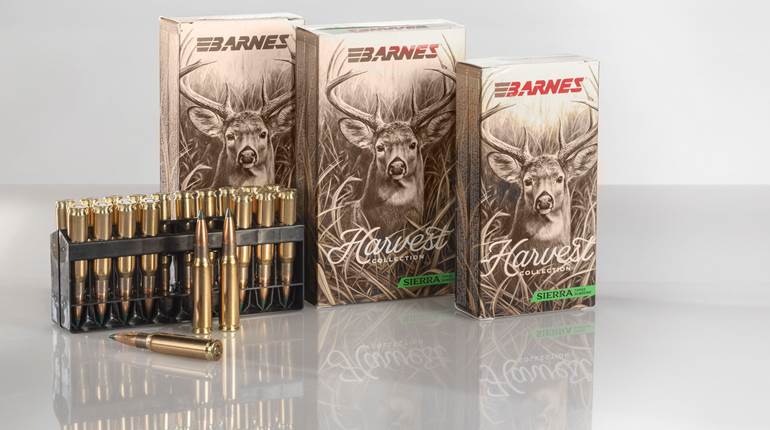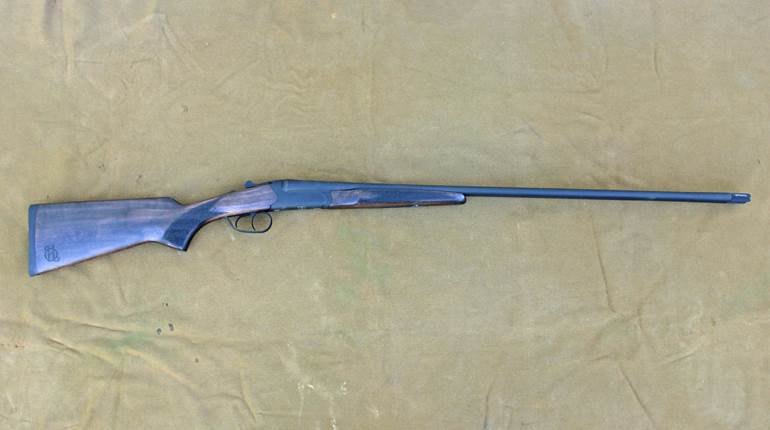
The 6.8x43 mm Rem. Special Purpose Cartridge (SPC) was developed by Special Forces personnel to boost the power level in the M4 carbine in order to address the perceived problems associated with the use of the 5.56x45 mm NATO cartridge. Predictably, this long-smoldering controversy continues as the military has apparently rejected its use.
Hopes that the 6.8 SPC would become the next great advancement in hunting cartridges were all but dashed when Remington, which commercially introduced it in 2004, failed to follow through on the promise of a6.8 SPC bolt-action. But, like Twain and Hemingway, reports of its death were greatly exaggerated. The 6.8 SPC has found a comfortable home with civilian shooters in AR-style rifles.
Based on a shortened version of the obsolete .30 Rem. case, the 6.8 SPC uses a 0.277"-diameter bullet that doubles the weight of the most popular bullets in the .223 Rem., but with only a moderate reduction in velocity from a short barrel.
Although it is adequate for deer- and similar-size game, it is not a powerhouse cartridge, so bullet choice is important. I have shot several deer and a mountain lion with the 6.8 SPC, and I have traced the bullet paths on several deer taken by other hunters. The problem encountered when testing this cartridge before its official introduction was that the bullets overexpanded on impact, limiting penetrations. Also, the short bullets tended to take unpredictable paths after expansion.
The 6.8 SPC is not a “drop-them-in-their-tracks” cartridge and rarely exited on a deer with the factory loads used in the early testing.
There are better options in factory loads for deer hunting today, but the handloader still has the most avenues open for improved bullet performance. Many bullet companies now have products designed just for this cartridge and, by matching the bullet to the game, the 6.8 SPC can become an effective hunting cartridge.
The cartridge works best with bullets from 85 to 115 grs. Although there is load data for 130-gr. bullets, it’s difficult to achieve enough velocity with this bullet weight. This is particularly true with a 16"-barreled AR-style rifle. Most of the 110-gr. bullets can be pushed to slightly more than 2500 f.p.s. from a 16" barrel. For deer, consider premium 110-gr. bullets such as the Nosler AccuBond or Barnes Triple-Shock X-Bullet for deep and straight penetration. You might also consider the cup-and-core-style Sierra Pro-Hunter bullet, which should work well at 6.8 SPC velocities. The 110-gr. Hornady V-Max is best used on coyotes, as it is a varmint bullet design and is a bit soft for deer hunting.
With a 90-gr. bullet you can approach 3000 f.p.s. with a longer barrel. That makes it a sizzling coyote load with bullets such as the Speer TNT or the Sierra hollow point. The Barnes 85-gr. Triple-Shock X-Bullet should also be a good deer load. This bullet is too new for me to have used it on whitetails yet, but Silver State Armory reports 17.38" of penetration in 10 percent ballistic gelatin at 100 yds. with the expanded bullet measuring 0.546". That’s acceptable whitetail performance.
The 100-gr. bullets seem to be mostly designed for varmint shooting. I can’t see any advantage over the 90-gr. for that use, but if they prove to be accurate in your specific rifle, then they don’t have any serious disadvantages, either.
There are two distinctly different cartridge cases for the 6.8 SPC. Remington uses a large rifle primer and the Hornady case uses a small rifle primer. Silver State Armory offers cases with both primer pocket sizes. I developed my loads with Remington brass using large rifle primers simply because I have a healthy supply of this brass. Most of the popular propellants for the .223 Rem. will work well in the 6.8 SPC, and there are a lot of options.
After testing a multitude of factory ammunition and handloads in four different rifles, I have not found the 6.8 SPC to be a particularly accurate cartridge. While accuracy is more than adequate for hunting, the 6.8 SPC will not be seen at many benchrest matches, and it certainly cannot match the inherent accuracy of the .223 Rem. While sub-minute-of-angle accuracy is easy to find with most ARs in .223 Rem., it proved elusive with the 6.8 SPC in all but one rifle. I have also found that each of the rifles is very load-sensitive.
Every rifle had a load or two that it shot well and others it did not. There is little consistency from rifle to rifle and a load that was accurate in one gun often would shoot horribly in another. So, if your 6.8 SPC rifle is not shooting well, don’t give up; I suspect the magic formula is out there waiting to be discovered. Another thing I noted is that almost all the rifles would shoot multiple loads to nearly the same point of impact out to 100 yds.
All brass should be full-length resized for any load to be used in an AR-type rifle. Trimming the brass ensures that the crimps are all even, which helps with accuracy. The maximum case length is 1.686". The maximum cartridge overall length (COL) is 2.260", the same as the .223 Rem.
Former DPMS President Randy Luth tells me that they have had better accuracy with a 1:11" twist rate over the standard 1:10" twist. DPMS offers barrels in both, and I have been working with one of its 1:11" rifles. My results would tend to support that claim. The results of five handloads and two factory loads fired with five-shot, 100-yd. groups in three rifles are as follows: DPMS 16"-barrel, 1:10" twist, 3.16" average: Bushmaster 16"-inch barrel 1:10" twist, 3.25" average; DPMS 20" barrel, 1:11" twist, 1.49" average. This represents all the groups with bullets from 85 grs. to 115 grs., all averaged together. The 1:11"-twist-barreled rifle outshoots both with 1:10"-twist rates, with groups averaging less than half.
The future of the 6.8 SPC remains a bit murky, but with the growing popularity of hunting with AR-type rifles, it has carved out a small niche with those looking for more energy than the .223 Rem. can deliver. With proper handloads, hunters who favor the AR will find this diminutive cartridge can hold its own on deer and predators, which just might mean it has finally found a home.





































